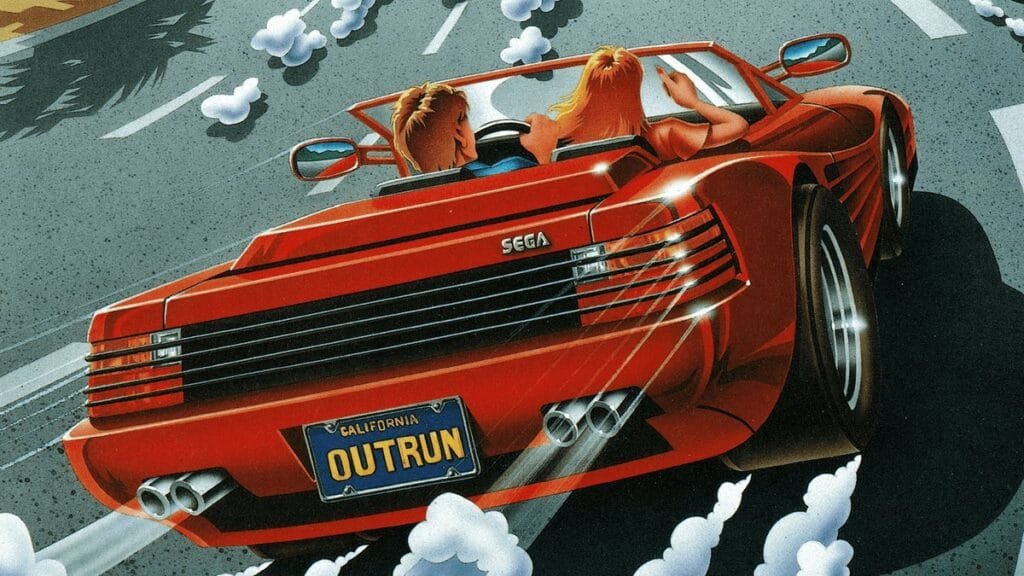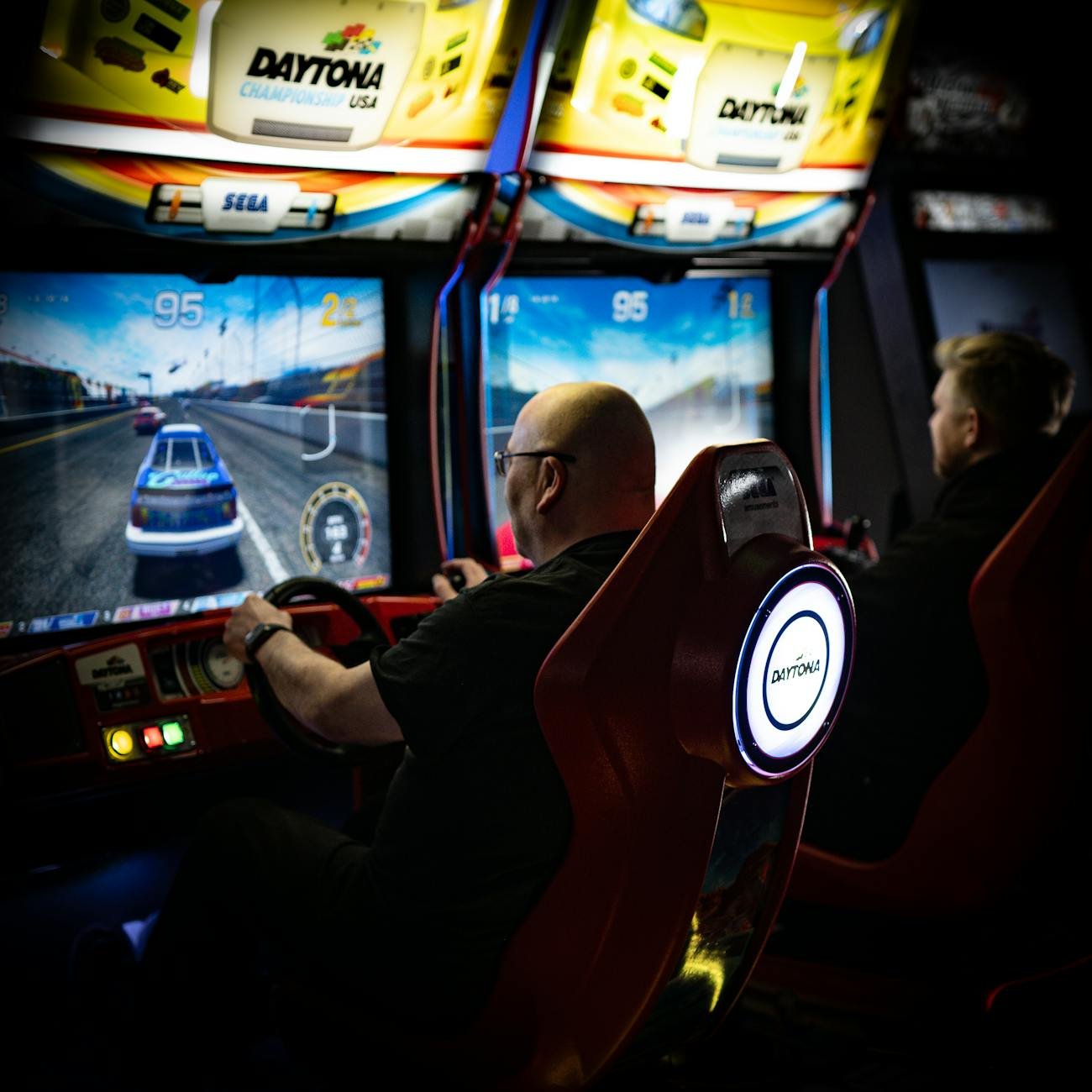I do not personally enjoy a forced sense of enjoyment or entertainment. I like both of those things as a reaction to something, but they do have to be at my discretion. I am not going to be having fun just because the developers of a game have decided so. Racing games have a particular bent in this direction and have had so for some time; the management of coercing auto-culture into every moment and sub menu from booting the game up until you actually get to the racing.
I understand what makers are going for… cars are cool. Or at least they used to be when cars were cool. By extension car culture is cool, or it was before developers started trying to jam it in, RPG-menu style to car games.
I am not going to be having fun just because the developers of a game have decided so.
It is the most non-fitting concept since that editorial piece about workers owning the means of production, which is what these racing games end up feeling like with their endless web of worker menus, each one so sure that it is the most important cog and should probably be put in charge. Nonsense. The player is the most important element, as the reader is to the book, and in both their edification must be assured.
Now, as I say, I do like cars and elements of the culture thereof. And since a work injury has me laid up playing the first Forza Horizon for the first time, I have been reflecting on whether auto culture has ever made sweet V12 with gaming culture, or has it all just been downhill since Amiga two-player classic Lotus Esprit Turbo Challenge? (Yes, it has – Ed)
GT and no tonic

Outrun was peak 1980s pixel racing. It didn’t so much capture auto culture as redirect it into something radiant. All good things but I personally don’t think that the capturing of the cars themselves came into arcades until the middle nineties, much less the capturing of culture.
Virtua Racing‘s cars looked… good, Ridge Racer and Daytona’s looked great but then Sega Rally came with its instantly recognisable Celica and Delta, and that was when I thought, here we go. Those cars, that handling, that logo… the tonic cool persona of rallying under a clear blue sky. Sega’s AM3 arcade team had distilled it into something so good that not even a conversion to the Saturn could destroy the flavour.
Far from it.
It was the King of home console cool until a couple of years later a couple of PlayStation titles went in for the jugular from quite different angles. One of them I liked a lot and the other one was Gran Turismo, which we shall deal with first, but not before proper context.

When I say culture, I do not omit, but am not really so focused myself on the cat-nip nerdery of the culture. Not that I have against that, in any of its forms. You go have it, take my share. It is more the ambience of things than the details for me. It’s why when I think car culture I think more Tyrrell’s Classic Workshop than Best of Pikes Peak. And as I have already admitted, I am experiencing Forza Horizon at the time of this. You might think things are stacked against me, and I did with Gran Turismo.
Gran Turismo wasn’t the first simulation racer, and it probably wasn’t even the most hardcore of the time. You’d have to go and ask a PC plod who was more of the nub of the details of the time. I remember that it took a symbolic place over the arcade racers before it. Formula One had already opened that market on PlayStation but Gran Turismo let you rag-out a Civic within its infinite menu technology, and then, if you had been utterly compliant, eventually rag-it-out on track.
The idea of grafting a story into a racing game, most especially one of such arcade pedigree as Ridge Racer was plainly wrong and yet there it was, all bright and chibi in appearance.
A lovely end result but I couldn’t do the details, all the menus and careful balancing of finances. I just wanted to go racing like we used to with racing games. I mean, I am the racing driver or the chief mechanic? I am the driver, whether the other AI cars like it or not.
By some good fortune, and quite late in the day of its release, a PlayStation game did arrive that understood how to have a little fun both on and off the track. That game came from Namco and was so good that I put my import Dreamcast down to play an import copy of it shortly after release. It made bold yellow cool before Crazy Taxi. It was Ridge Racer, but it was so much more.
Subscribe to our newsletter!
Fourth time’s a charm
The idea of grafting a story into a racing game, most especially one of such arcade pedigree as Ridge Racer was plainly wrong and yet there it was, all bright and chibi in appearance.
Of course, playing a Japanese import copy meant I couldn’t understand a word of whatever championship I was bossing at the time. It didn’t matter, the facade of this game sucked me into menus which I could not comprehend, only to spit me out onto a race track in hot new wheels with an earful of fusion.
There was a serious career side to this game which could not be escaped, but such were its MDMA-light motifs of design and execution, you just couldn’t help but get on down and boogie through its myriad sunset yellow flip charts of fun. Ridge Racer Type 4, even if it did car culture a little different by design, didn’t forget to throw a good spoonful of charm on top.
Nor did Bizarre Creations, whose much hyped and eventually released, Metropolis Street Racer on Dreamcast offered players a way through the incumbent misery of simulation culture. It had a combination of car cool attitude and score attack directives that was unique for the time. There was a sense of celebration over simulation to the whole thing, and that series did continue with Microsoft at a time when, post Fast and the Furious, the only arcade focused racers had all gone for underground attitude.
It is enough to make me think, what is it that I am looking for that is external to the pleasure of just racing in a racing game? Of all the examples, I am thinking about Animal Crossing: New Horizons.
Old horizons
Ordinarily, I would have little to say about Animal Crossing: New Horizons. I see it being played by my family sometimes, on my way to leaving the room, and that’s about my limit. It is basically, from what I have allowed my eyes to see, a giant collect-a-thon. Boo. And yet… take the dullery of its collectable items away, but keep the design layout and transpose it all over to a classic restoration workshop.
You could order new parts, waddle off and collect them from the post office and then go through a rudimentary fitting procedure similar to the patronising farming motifs of New Horizons. Just enough to give a sense of interaction higher than the menu misery of most auto games, but not enough to get in the way of the very things you switched a racing game on for. Racing.
Tyrrell’s Classic Crossing: Old Horizons?
Affiliate Disclosure: Some of the links in this post may be affiliate links, which means I may earn a small commission if you make a purchase through those links. This comes at no extra cost to you. Thank you for your support!
John is a former contributor with a collection of interesting retro gaming recollections.





